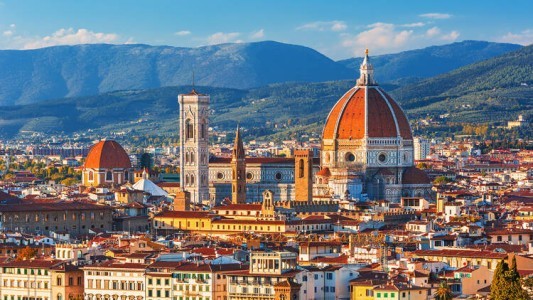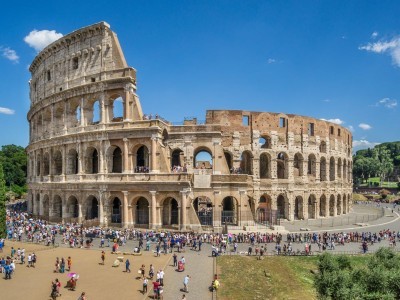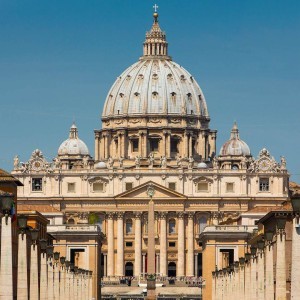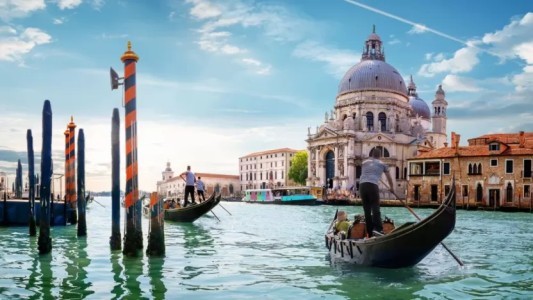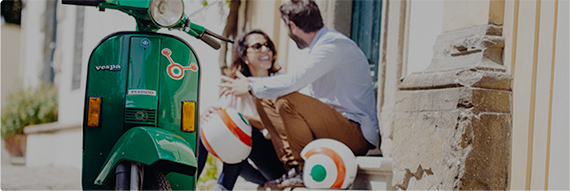Meet the Medici

This political and banking family dynasty ruled Florence for four centuries. One of the wealthiest families in Florence in the 15th century, they became the unofficial rulers of the city under Cosimo the Elder, and fostered the birth of the Renaissance throughout this century under Lorenzo the Magnificent. The last Medici heir, Gian Gastone, died childless in 1737. His sister, Anna Maria Luisa, was the last of the Medici family, herself childless, and the great dynasty of the family came to an end.
Key Players of the Medici Family (from left top corner to bottom right):
Giovanni di Bicci (1360-1429)
Giovanni is one of five sons of a poor widow. Cautious and modest, he becomes the founder of the Medici bank and Giovanni's rags to riches story becomes the beginning of one of the wealthiest dynasties in Europe.
Motto: “Always keep out of the public eye and never display any pride.”
Cosimo the ElderAKA Pater Patriae, Father of the Country, il Vecchio (1389-1464)
The son of Giovanni di Bicci, Cosimo inherits his father's wealth and eye for business. A humanist and scholar, he is a patron of the arts and learning, commissioning the likes of Donatello, Fra Angelico and Michelozzo, setting up a Platonic Academy and collecting rare texts for his library, enriching Florence in what is essentially the beginnings of the Renaissance. He is so influential in the government that he becomes the de facto ruler of Florence.
Motto: “Exercise intellect, as much as force.” “Spending money gives me greater pleasure than earning it.”
Piero the Gouty (1416-1469)
One of the two children of Cosimo the Elder, Piero takes over from his father as the ruler of Florence, but suffers from perpetual poor health due to gout. The rival Pitti family attempts a coup to overthrow Piero, which fails, and he manages to keep the ship running smoothly, commissioning the Gozzoli fresco of the Procession of the Magi, adding to his father's rare book collection until his premature death from gout and lung disease. The most important thing Piero leaves behind for Florence, is his son, Lorenzo.
Lorenzo the Magnificent (1449-1492)
Diplomat, politician, peace-maker, poet and art patron, Lorenzo's lifetime represents the pinnacle of the Renaissance. Following his grandfather's humanistic trends, he lives life to the full even though he finds his life constantly in danger – particularly in 1478 when the Pazzi family attempt to murder him and succeed in murding his brother. His circle of friends includes Botticelli, Leonardo and Michelangelo, and he inspires the sprit of discovery and intellectual inquiry throughout Florence. Although not so great at managing the bank, Lorenzo is an excellent ruler, promoting peace and gaining the adoration of the citizens. His death marked the end of a Golden Age.
Motto: “Whoever wants to be happy, let him be so; of tomorrow there is no knowing.”
Guliano de' Medici (1453-1478)
Co-ruler and little brother to Lorenzo the Magnificent, Guiliano's life is cut short after suffering 19 stab wounds in an assassination inside the Duomo at age 25. Guiliano, the golden boy of the Medici family, was as popular as Lorenzo. His leaves behind an illegitimate son, Giulio, who later becomes Pope Clement VII and fathers his own illegimate children.
Catherine de' Medici (1519-1589)
The great-granddaughter of Lorenzo the Magnificent, Catherine's parents die of syphilis just weeks after she was born. Raised by relatives, held hostage in convents and almost sacrificed on the walls of Florence during the Siege, her cousin Pope Clement VII eventually organises her marriage to Henry II of France at age 14, and she becomes what some historians call the most important woman in 16th century Europe. Catherine, transported to the French court and disgusted with the local cuisine, brings her own Italian chefs with her and introduces gelato, pastry and never-before seen vegetables such as truffles and artichokes to France. Her table manners took a lot longer to catch on, but her insistence on using a fork eventually stuck. Looked down upon in the French court for her commoner origins, she is initially ignored, but her rocky marriage (Henry always preferred his older mistress) does not interfere with the fact that she gives birth to nine children, and when Henry dies after a jousting accident leaves him with a lance speared through one eye and his brain, Catherine is thrust into the political light as queen mother and gains sweeping powers, eventually outliving her king sons and earning a reputation as a scheming, evil Italian queen, “Madame Snake.”
Motto: “Peace is carried on a stick”
Alessandro de' Medici AKA il Moro, the Moor, Duke of Penne and Duke of Florence (1510-1537)
The illegitimate son of Pope Clement VII (Giuliano de' Medici's illegitimate son), historians believe his mother to be a Moorish serving woman in the Medici household, Simonetta da Collavecchio. Alessandro has the unfortunate situation of being the last member of the senior branch of the Medici family, and becomes the first to inherit the title of Duke. Aged only 21, Alessandro finds he has many enemies and is eventually assassinated by his own cousin, Lorenzino, who tricks him into a vulnerable situation by pretending he has organised a raunchy night with a beautiful woman.
Cosimo de' Medici AKA Grand Duke of Tuscany, Cosimo I (1519-1574)
Cosimo is the man everyone underestimated. Born to a different branch of the family, stemming from Cosimo the Elder's little brother, Cosimo becomes ruler of Florence at age 17 after Alessandro's assassination. While many think of using Cosimo as a puppet, he proves himself to be more than capable, and not only restores the power of the Medici, guaranteeing another 200 years of rule, but spreads the power until it envelopes all of Tuscany, all the while maintaining his family tradition of being a lavish patron of the arts. A loyal and loving husband to his first lady, Eleonora di Toledo, he falls into a deep depression when she, along with two of their sons, dies of malaria and he gives up his rule to his son Francesco.
Motto: “I am a ruler who accepts the authority of no one except God.”
Francesco I de' Medici (1541-1587)
Eldest son of Cosimo I and Eleonora di Toledo, Francesco takes over rule of Tuscany from his father and marries Joanna of Austria, a woman he is apparently not too fond of and has trouble getting pregnant. Instead, preferring his Venetian mistress, Bianca Cappello, a series of unfortunate incidents causes people to cry foul-play – Bianca's husband is mugged and dies, Joanna “accidentally” falls down the stairs while 8 months pregnant and dies, and Francesco and Bianca secretly get married. With a keen interest in science, chemistry and alchemy (like his father) to boot, it is really no wonder that there are those that suspect posioning when several years later, Francesco and Bianca both die on the same day. Having no heirs, little brother Ferdinando takes over as Grand Duke.
Ferdinando I de' Medici (1549-1609)
Francesco's little brother had originally been named a cardinal until he was made Grand Duke, when he married Christine of Lorraine. In many ways the opposite of his brother as a ruler, Ferdinando is generous, approachable and tolerant, leading a period of wealth, independence and tolerance throughout Tuscany. His son, Cosimo II at age 19 becomes the next Grand Duke, but dies of tuberculosis at age 31.
Anna Maria Luisa de' Medici AKA The Last Medici, Dowager Electress Palatine (1667-1743)
Anna Maria Luisa, great-great-granddaughter of Ferdinando I, is the last Medici. Her brother, Gian Gastone, the last Grand Duke, has an unfortunate addiction to gambling, alcohol and young men, which, combined with his utter disgust and hostility to his wife ultimately means he has no offspring. At his death to syphilis, Anna Maria Luisa inherits the entire Medici legacy. As her husband, Elector Johann Wilhem II, also has syphilis, Anna Maria Luisa is also childless, and the Medici line faces complete extinction. She busies herself by financing the construction of the Basilica of San Lorenzo, including her own crypt, leaving plenty of money to finish and perfect the famous Medici chapels. Her last enduring act is the “Family Pact”, where she ensures that all the centuries' worth of Medici treasures remain in the city of Florence, essentially guaranteeing Florence's future economy through tourism even to this day. Every 18th of February, in commemoration of the day Anna Maria Luisa died, Florence's museums are free to all.



